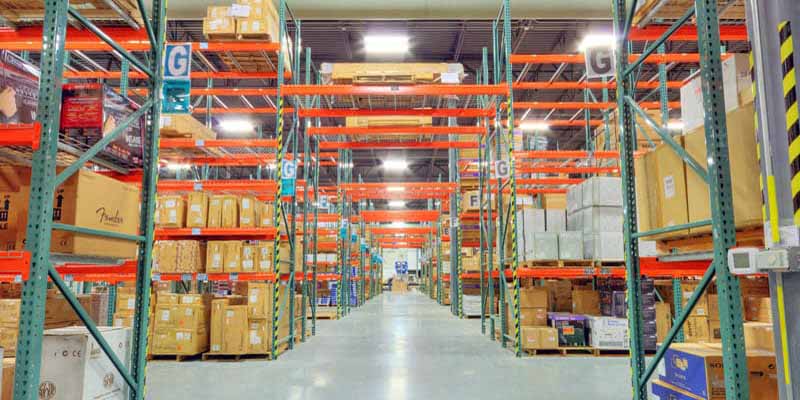
Envision any plant/manufacturing area without cluttered walkways, overabundance inventory, lost or harmed items, erroneous records, endless searching, climbing, bending, and dissatisfaction. Envision a profoundly productive operation that adds worth and reduces cost.
Automated Storage and Retrieval system (ASRS) is intended to achieve high-density hands-free buffering of materials in distribution and producing conditions. ASRS is a complete framework intended to ship, stage/store, retrieve, and report on each product in any industrial stock with updated minute precision.
An automated storage and retrieval system (ASRS) can be considered as a storage framework under which a stated level of automation is to be implemented to guarantee precision and speed in performing storage and retrieval activities. This automated storage and motorized frameworks rule out the intervention of human in performing some primary sets of activities that incorporate:
The unit load ASRS is utilized to store and retrieve loads that are palletized or stored in standard-sized holders. The framework is controlled by a computer. The storage retrieval (S/R) machines are robotized and designed in a way to deal with the unit load containers. Generally, a mechanism of mechanical clamp on the S/R machine handles the load. However, there are different systems, for example, a vacuum or a magnet-based mechanism for handling sheet metal. The loads are commonly more than 500 lb for each unit. The unit load framework is conventional ASRS.
The design of these systems is such that it can manage small loads, for example, individual parts, instruments, and supplies that are contained in bins or drawers in the storage framework. Such a framework is suitable where the availability of space is limited. It also discovers its utilization where the volume is excessively low for a full-scale unit load framework and excessively high for a manual framework. A mini-load ASRS is commonly smaller than a unit load ASRS and is frequently encased for the security of stored products.
VLMs can be created very high to coordinate the available overhead space in an office. Numerous units can be set in pods whereby an administrator can retrieve products from one unit while different units are moving. Variations incorporate width, height, load, speed, and a control framework.
VLMs give floor space savings, expanded labor profitability and picking precision, enhanced worker ergonomics, and controlled process.
Most VLMs offer unique space storage which measures the tray each time it is returned to the unit to upgrade space, security features, and some offer tilt tray delivery for expanded ergonomic accessibility and laser pointers which demonstrate the specific product to be picked on every plate.
Due to the outbreak of Covid-19, customers’ behavior has been shifting towards online channels. The demand for online channels has seen growth for different segments such as food & beverages, essential items, and pharmaceuticals which are being delivered to customers’ home with contactless delivery. The demand for warehouses of different e-commerce companies has also increased due to the increase in the online demand for the products.
Top e-commerce players such as Amazon, Alibaba, and eBay are ramping up the demand for ASRS as they keep on creating new warehouses across the world. These increases number of warehouses need the installation of ASRSs for appropriate inventory management, cataloging, and retrieval services.
The growth in demand for electric vehicles and autonomous vehicles has promoted the automotive makers to ramp up manufacturing, which needs spare parts of the car. Automotive manufacturing plants have to manage a lot of goods and variety and breadth of stock effectively. Also, these plants need to enhance their storage capacity within the available floor space.
Therefore, ASRS systems are continuously being used to fulfill the prerequisites associated with material handling capacity. During the current Covid-19 situation, the automotive industry is under massive financial loss. Due to severe lockdown guidelines, individuals have been forced to stay at their home.
The outbreak of Covid-19 has resulted in low demand for ASRS in the automotive industry. However, once the situation gets normalized and the economy starts recovering from the adverse impact of Covid-19, the automotive industry will again see a massive demand for the ASRS system.
Automated Storage and Retrieval System offers huge space savings, a smaller footprint, and a more intelligent inventory framework which is being upgraded accordingly all through its working activity. This ASRS growth and implementation deal with coordinating both mechanical components and electrical information.
The mechanical components of this ASRS growth give instruments for the ASRS to satisfy its advanced automated tasks, while electrical components manage the control of the movements on each article. The Global Automated Storage and Retrieval System (ASRS) Market size is expected to rise at a market growth of 9.3% CAGR during the forecast period.